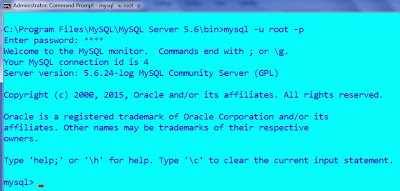Recently I was working on a request to get a report on disk utilization for about 100 servers.
For sure I don’t want to login to each server and check the disk usage manually. This can be done using T-SQL, but still I was looking for a consolidated report which will give me a clear picture.
Powershell is the best to get this done.
Here is the script I wrote to get the consolidated disk usage report.
===================================================
#Set the path where the html report will be created
Set-Location D:\Powershell\
$a = "<style>"
$b = "<H2>Disk Usage Report</H2>"
$a = $a + "BODY{background-color:Cyan;}"
$a = $a + "TABLE{border-width: 1px;border-style: solid;border-color: black;border-collapse: collapse;}"
$a = $a + "TH{border-width: 2px;padding: 1px;border-style: solid;border-color: black;background-color:thistle}"
$a = $a + "TD{border-width: 2px;padding: 1px;border-style: solid;border-color: black;background-color:palegoldenrod}"
$a = $a + "</style>"
#Place the list of servers for which report is required and update the text file path accordingly
$ServerList = Get-Content "D:\Powershell\serverlist.txt"
Foreach($ServerLists in $ServerList)
{
Get-WMIObject Win32_LogicalDisk -ComputerName $ServerList | Select-Object PSComputerName,DeviceID, DriveType, `
@{name='FreeSpaceInGB';Expression={[math]::truncate($_.freespace / 1GB)}}, `
@{Name='SizeInGB';Expression={[math]::Truncate($_.Size/1Gb)}}, `
@{Name="FreePercentage";Expression={"{0,6:P0}" -f(($_.freespace/1gb) / ($_.size/1gb))}} | Where-Object DriveType -EQ 3 `
| convertto-html PSComputerName,DeviceID,FreeSpaceInGB,sizeInGB, FreePercentage -head $a -Body $b | Out-File Report.htm
}
===================================================
Cheers,
Naveen
For sure I don’t want to login to each server and check the disk usage manually. This can be done using T-SQL, but still I was looking for a consolidated report which will give me a clear picture.
Powershell is the best to get this done.
Here is the script I wrote to get the consolidated disk usage report.
===================================================
#Set the path where the html report will be created
Set-Location D:\Powershell\
$a = "<style>"
$b = "<H2>Disk Usage Report</H2>"
$a = $a + "BODY{background-color:Cyan;}"
$a = $a + "TABLE{border-width: 1px;border-style: solid;border-color: black;border-collapse: collapse;}"
$a = $a + "TH{border-width: 2px;padding: 1px;border-style: solid;border-color: black;background-color:thistle}"
$a = $a + "TD{border-width: 2px;padding: 1px;border-style: solid;border-color: black;background-color:palegoldenrod}"
$a = $a + "</style>"
#Place the list of servers for which report is required and update the text file path accordingly
$ServerList = Get-Content "D:\Powershell\serverlist.txt"
Foreach($ServerLists in $ServerList)
{
Get-WMIObject Win32_LogicalDisk -ComputerName $ServerList | Select-Object PSComputerName,DeviceID, DriveType, `
@{name='FreeSpaceInGB';Expression={[math]::truncate($_.freespace / 1GB)}}, `
@{Name='SizeInGB';Expression={[math]::Truncate($_.Size/1Gb)}}, `
@{Name="FreePercentage";Expression={"{0,6:P0}" -f(($_.freespace/1gb) / ($_.size/1gb))}} | Where-Object DriveType -EQ 3 `
| convertto-html PSComputerName,DeviceID,FreeSpaceInGB,sizeInGB, FreePercentage -head $a -Body $b | Out-File Report.htm
}
===================================================
Cheers,
Naveen

























